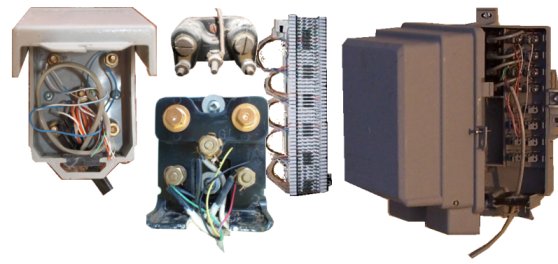Difference between revisions of "Telephone System"
(Created page with "The telephone company provides for you a dialtone from the global telephone network. The wire carrying your dialtone will be attached to your home directly to the demarc. Demar...") |
|||
| Line 3: | Line 3: | ||
[[File:wiki-telco-demarc-examples.jpg]]<BR>Illustration: Examples of the Demarc (DMARC D-MARC). | [[File:wiki-telco-demarc-examples.jpg]]<BR>Illustration: Examples of the Demarc (DMARC D-MARC). | ||
| + | A 66 block (also M-Block) is a type of punchdown block used to connect sets of wires in a telephone system. Often, more frequently in smaller commercial settings, the punch down block is the demarc. | ||
| + | |||
| + | Maintenance of the demarc itself is generally the responsibility of the telephone company. Any lines and equipment connected to the demarc are the responsibility of the consumer. | ||
| | ||
Revision as of 23:44, 13 June 2011
The telephone company provides for you a dialtone from the global telephone network. The wire carrying your dialtone will be attached to your home directly to the demarc. Demarch or Dmarc is short for "demarcation point" which is the point where the telephone company network ends and connects with the wiring at the customer premises. You may find the demarc on the inside or outside of your home or business.

Illustration: Examples of the Demarc (DMARC D-MARC).
A 66 block (also M-Block) is a type of punchdown block used to connect sets of wires in a telephone system. Often, more frequently in smaller commercial settings, the punch down block is the demarc.
Maintenance of the demarc itself is generally the responsibility of the telephone company. Any lines and equipment connected to the demarc are the responsibility of the consumer.